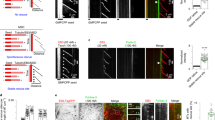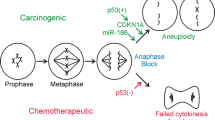Abstract
The principal hydroxy-metabolites of benzene — phenol, catechol and hydroquinone — possess characteristics and produce toxicity similar to those reported for certain inhibitors of microtubule polymerization. In this study we examined the effects of phenol, catechol and hydroquinone on purified microtubule polymerization and the decay of tubulin-colchicine binding activity. Hydroquinone, but not catechol or phenol, inhibited microtubule polymerization and accelerated the decay of tubulin-colchicine binding activity. The latter effect was shown to be dependent on the concentration of GTP. Hydroquinone did not directly complex with GTP or ATP but bound to the high molecular weight fraction of tubulin. Concentration ratios of hydroquinone to tubulin resulting in altered activity were low, suggesting a specific interaction, presumably at the tubulin-GTP binding site. The acceleration of tubulin-colchicine binding activity decay was completely prevented under anaerobic conditions, indicative of an oxidative mechanism. These studies suggest that hydroquinone, which auto-oxidizes, may interfere with microtubule function, nucleotide binding or both and that this mechanism may be involved in eliciting the wide range of cytoskeletal-related abnormalities observed in cells exposed to benzene in vivo or its metabolites in vitro.
Similar content being viewed by others
References
Borisy GG, Marcum, JM, Olmstead JB, Murphy DB, Johnson KA (1975) Purification of tubulin and associated high molecular weight proteins from porcine brain and characterization of microtubule assembly in vitro. Ann NY Acad Sci 253: 107–132
Borisy GG, Olmsted JB, Marcum JM, Allen C (1974) Microtubule assembly in vitro. Fed Proc 33: 167–174
Bryan J (1974) Biochemical properties of microtubules. Fed Proc 33: 152–157
Chavin W, Jelonek EJ Jr, Reed AH, Binder LR (1980) Survival of mice receiving melanoma transplants is promoted by hydroquinone. Science 208: 408–410
Deysson G (1975) Microtubules and antimitotic substances in microtubules and microtubule inhibitors. Borgers M, DeBrabander M (eds) Elsevier, North Holland New York, pp 427–451
Edelman GN (1976) Surface modulation in cell recognition and cell growth. Science 192: 218–219
Gaskin F, Cantor CR, Shelanski ML (1975) Turbidimetric studies of the in vitro assembly and disassembly of porcine neurotubules. Ann NY Acad Sci 253: 133–146
Gornall AG, Bardaill CJ, David MM (1949) Determination of serum proteins by means of the biuret reaction. J Biol Chem 177: 751
Greenlee WF, Bus JS (1980) A proposed mechanism for benzene toxicity: Formation of reactive intermediates from polyphenol metabolites of benzene. Pharmacologist 22: 389
Himes RH, Himes VB (1980) Inhibition of tubulin assembly by ethylacetyl-acrylate, a sulfhydryl reagent and potential analog of cytochalasin A. Biochem Biophys Acta 621: 338–342
Ikeda Y, Steiner M (1978) Sulfhydryls of platelet tubulin: Their role in polymerization and colchicine binding. Biochemistry 17: 3454–3459
Irons RD (1980) Benzene induced myelotoxicity: Application of flow cytofluorometry for the evaluation of early proliferative changes in bone marrow. Environ Health Perspect (in press)
Irons RD, HeckHd' A, Moore BJ, Muirhead KA (1979) Effects of short-term benzene administration on bone marrow cell cycle kinetics in the rat. Toxicol Appl Pharmacol 51: 399–409
Katz NL (1972) Effects on fros neuromuscular transmission of agents which act upon microtubules and microfilaments. Eur J Pharmacol 19: 88–93
Kuriyama R, Sakai H (1974) Role of tubulin-SH groups in polymerization to microtubules. J Biochem 76: 651–654
Lacey PE, Howell SL, Young DA, Fink CJ (1968) New hypothesis of insulin hormone secretion. Nature 219: 1177–1179
Lagnado JR, Kirasov EP (1975) Studies on the phosphorylation of brain microtubule protein and microtubule-associated lipids in microtubules and microtubule inhibitors. Borgers M, DeBrabander M (eds) Elsevier, North Holland, New York, pp 127–140
Laskin S, Goldstein BD (1977) Benzene toxicity: A critical evaluation. J. Toxicol. Environ Health (Suppl) 2: 148
MacKinney AA, Vyas R, Powers KJ (1978) Morphologic effect of hydantoin drugs on mitosis and microtubules of cultured human lymphocytes. J Pharmacol Exp Ther 204: 195–202
Mann K, Giesel M, Fasold H, Haase W (1974) Isolation of native microtubules from porcine brain and characterization of SH groups essential for polymerization at the GTP binding sites. FEBS Lett 92: 45–48
Mason RP (1979) Free radical metabolites of foreign compounds and their toxicological significance. Rev Biochem Toxicol 1: 151–200
McClain DA, Edelman GM (1980) Density-dependent stimulation and inhibition of cell growth by agents that disrupt microtubules. Proc Natl Acad Sci USA 77: 2748–2752
Misumi M, Yamaka H, Akiyama T, Tanaka N (1979) Mechanism of action of alacinomycin A: The interaction with DNA and with tubulin. J Antibiot (Tokyo) 32: 48–52
Mellon MG, Rebhun LI (1976) Sulfhydryls and the in vitro polymerization of tubulin. J Cell Biol 70: 226–238
Muirhead KA, Irons RD, Bruns R, Horan PK (1980) A rabbit bone marrow model system for evaluation of cytotoxicity. J Histochem 28: 526–532
Parmentier R, Dustin P, Jr (1953) On the mechanism of mitotic abnormalities induced by hydroquinone in animal tissue. Rev Belge Pathol Med Exp 23: 20–30
Shapiro AL, Vinuela E, Maizel JV (1967) Molecular weight estimation of polypeptide chains by electrophoresis in SDS-polyacrylamide gels. Biochem Biophys Res Commun 28: 815–820
Traganos F, Evenson DP, Staiano-Coica L, Darzynkiewicz Z, Melamed M (1980) Action of dihydroxyanthraquinone on cell cycle progression and survival of a variety of cultured mammalian cells. Cancer Res 40: 671–681
Weisenberg RC, Borisy GG, Taylor EW (1968) Colchicine-binding protein of mammalian brain and its relation to microtubules. Biochemistry 7: 4466–4470
Wierda, D, Greenlee WF, Irons RD (1980) Immunotoxicity of benzene metabolites in C57BL/6 mice. Pharmacologist 22: 260
Wilson L, Bamburg JR, Mizel SB, Grisham LM, Creswell KM (1974) Interaction of drugs with microtubule proteins. Fed Proc 33: 158–166
Wilson L, Meza I (1968) Mechanism of action of colchicine. Colchicine binding properties of sea urchin sperm tail outer doublet tubulin. J Cell Biol 58: 709–719
Zweig G, Sharma J (1972) Handbook of chromatography V. II, Cleveland, p 162
Author information
Authors and Affiliations
Rights and permissions
About this article
Cite this article
Irons, R.D., Neptun, D.A. Effects of the principal hydroxy-metabolites of benzene on microtubule polymerization. Arch. Toxicol. 45, 297–305 (1980). https://doi.org/10.1007/BF00293810
Received:
Issue Date:
DOI: https://doi.org/10.1007/BF00293810




